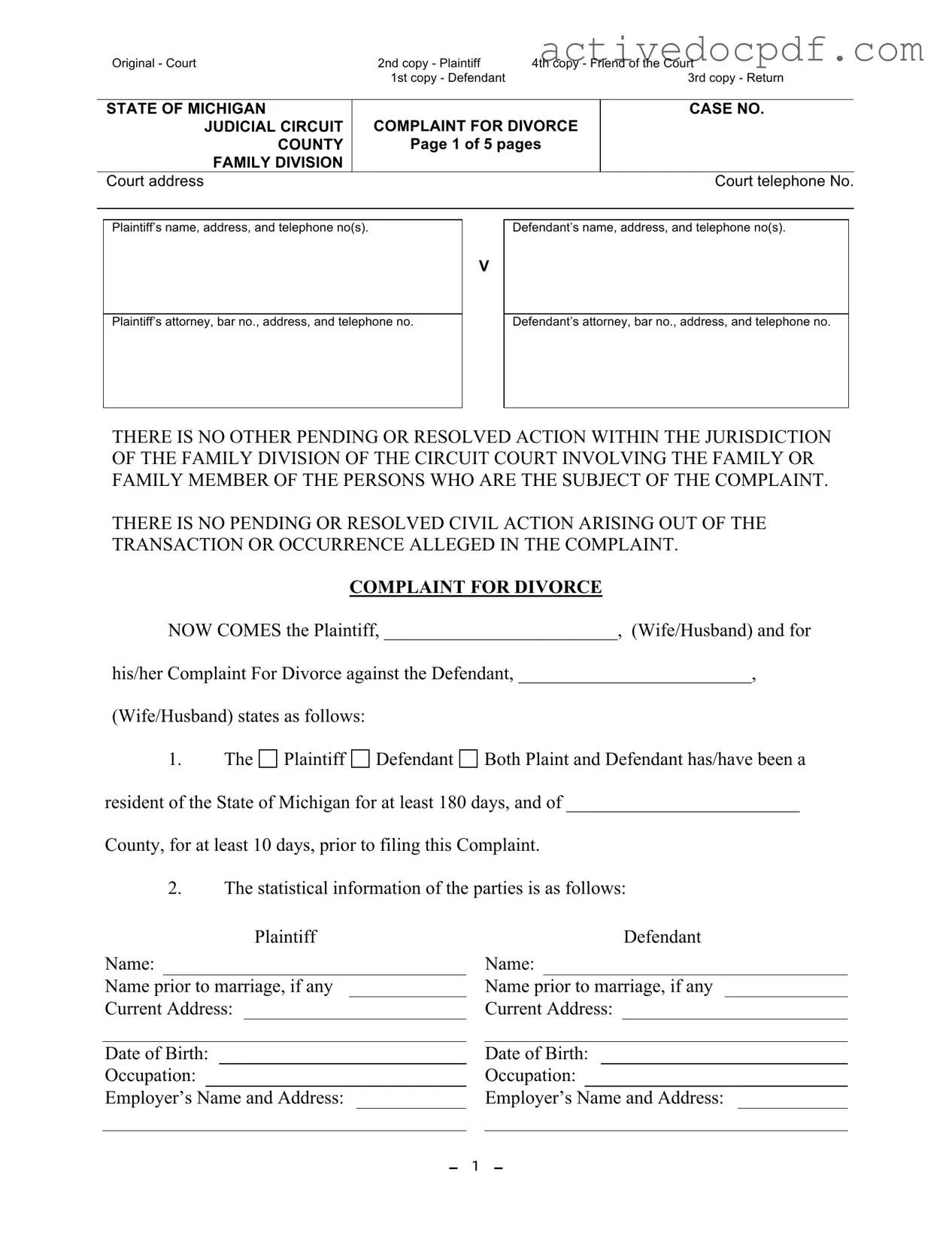The Michigan Complaint Divorce form is a legal document that initiates the divorce process in Michigan. It is filed with the family division of the circuit court. This form outlines the reasons for the divorce, provides details about the parties involved, and addresses issues such as property division and child custody if applicable.
Who should file the Complaint for Divorce?
The Complaint for Divorce should be filed by one spouse, known as the Plaintiff. The other spouse is referred to as the Defendant. Both parties must meet residency requirements, having lived in Michigan for at least 180 days and in the county where the complaint is filed for at least 10 days prior to filing.
The form requires various pieces of information, including:
-
The names and addresses of both the Plaintiff and Defendant.
-
Details about any minor children, including their names and dates of birth.
-
Information regarding the marriage, such as the date and place of the marriage.
-
A statement about the residency of the parties and any other pending legal actions.
This information helps the court understand the context of the divorce and any related issues.
Once the Complaint for Divorce is filed, the court will issue a case number and schedule a hearing if necessary. The Defendant must be served with a copy of the complaint. Both parties may then engage in negotiations regarding property division, child custody, and support. If an agreement is reached, it can be formalized through a Property Settlement Agreement.
Can the Plaintiff request a name change in the Complaint?
Yes, the Plaintiff can request to restore a maiden name in the Complaint for Divorce. This request should be clearly indicated on the form. If no name change is desired, the Plaintiff can simply state that no restoration of name is requested.
What if there are minor children involved?
If there are minor children, the Complaint must include specific information about their living arrangements and any past custody proceedings. The court will consider the best interests of the children when making decisions regarding custody and support. The parties are encouraged to work together to create a Separation and Property Settlement Agreement that addresses these issues.
